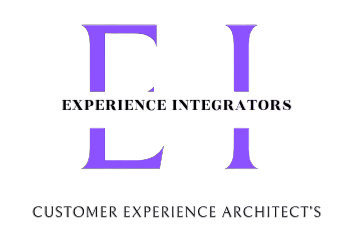Practising as a CX professional for over 45 years, I have been often left scratching my head why delivering a good experience to a customer/citizens has been so challenging for even large organisations/government departments (who are meant to deliver citizen welfare.).
Pondering over this question and looking closely on the mechanics of where it fails and what are some of the missing pieces in organizational design has led me to the following observations:
- Every organisations and every leader intrinsically believes that the ‘customer/citizen is king’, however in the day-to-day running of an enterprise or a government often they do not remain central to the decision-making/execution process. This largely happens since an enterprise is governed on a day to day by a primary motive of making profits as their survival/expansion aim and government is driven by political leaderships aim to win votes (in a democratic setup) by catering at a common denominator to a broad constituency and key influencers.
- Historically organisational design has evolved on the principles of efficiency of operations (vertical functional specialisations) and to reduce costs /time – which was a key driver in the industrial production age – when ‘products/reach’ defined the customer experience. As ‘product experience’ became a standardized offering (through competition/logistic sophistication) customer experience components extending beyond the product to experience at all touchpoints started to matter in the competitive brand consideration for customers. Organisational systems to understand and cater to these changed expectations have been slow in evolving.
- Instead of standalone products being sold to customers, organisations started to offer them as a part of enlarged solution offering to customers so as to meet the ‘end use’ need for them more effectively. By doing this, organisation’s also realised that profit margins were much higher, it opened new markets and provided a competitive edge over ‘product only’ companies. Organisational design, systems, and processes needed for becoming a professional ‘service product’ company however remained ‘reactive’ in nature and delivery of customer experience still happens through a ‘product centered’ approach/systems.
- A lot of academic work on new tools of ‘Customer Experience Management’ has happened over the last few decades, however their adoption into operational practices by organisations is still scanty.
- The Customer Experience (CX) function in organisations is still largely a ‘reactive’ function charged with handling customer interactions and handling customer issues. Making this function more strategic in the design of robust CX systems/processes and making ‘Voice of Customer ‘ central to the decision guidance system of the organization has not happened. This can be attributed partly on account of competency/skill evolution gap of CX leadership and partly on account of awareness at the CEO/CX level of immense opportunities that a robust CX organizational design and management practices presents to the organization for its brand/success.
- Lack of any international standards for a CX framework that can guide organization on the key components of a robust CX delivery system and put an assessment/audit that allows a ‘maturity’ comparison. What happened in the manufacturing age for products – the development of standards like ISO and then in some related services – like software / BPO / Environment Management / Risk Management, etc now needs to happen for ‘Service Products’. This is an unexplicable gap that is a crying need for international certification bodies to take up and address quickly.
- A certified course on ‘Customer Experience Management’ at management schools is still not there for CX professionals to upskill and for new management graduates to be made aware of. Transfer of CX academic developments to the practice arena is still almost non- existent. Organisations and organizational associations have to realise the opportunity gap here and engage more with the academia for this.
- Citizen services audit and public disclosure of performance is still not mandated. There are however a few shining examples of where this has been done and with excellent results for delivering ‘citizen experience’ . The case is point is the ‘Swachh Bharat Abhiyan’ of Government of India.
There are well-defined attributes on which each municipality is measured every quarter and the results are widely published in the media. Not only has it brought accountability, it has built peer group pressure on municipalities to perform (where earlier they were slothy/inefficient) and the results are noticeable at a national and societal level. Such practices need to be done across all citizen touchpoints – especially the ‘digital’ touchpoints. Excellent digital initiatives of the government other falter at the touchpoints making it a uphill task for various constituents of the users (semi literates/elderly,etc).

